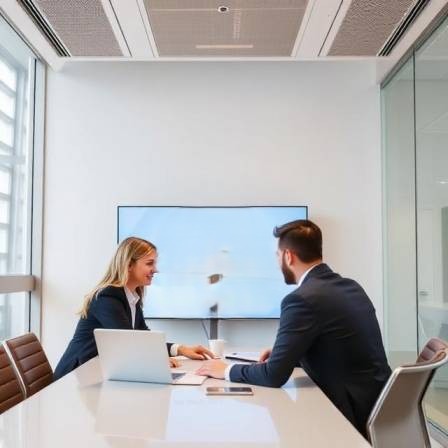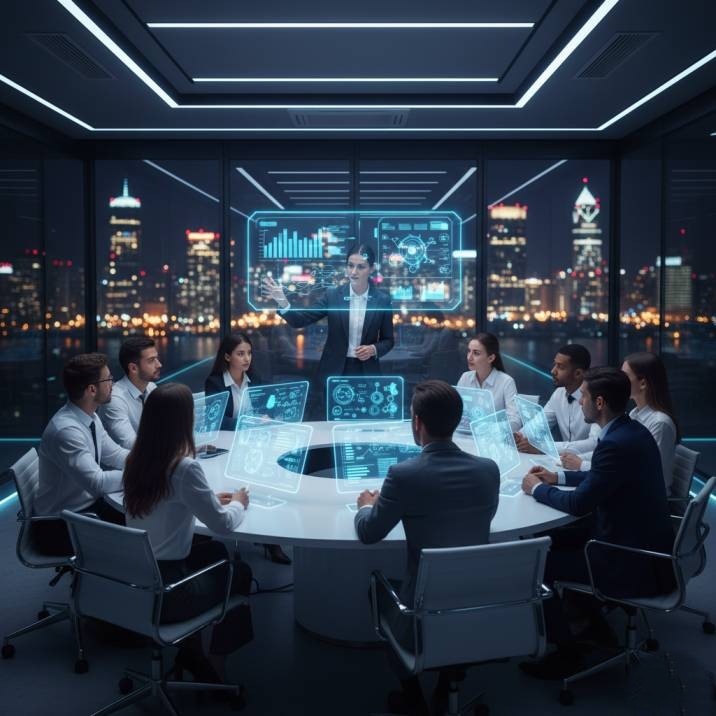Huawei’s AI-Driven Cloud Architecture for Intelligent Transformation
Huawei is reshaping industries across the globe with its AI-driven cloud architecture that can think, predict, and optimize like humans.
In September 2025, Huawei announced a major milestone: its collaboration with global steel manufacturers to build an AI-powered cloud architecture that boosts productivity, reduces emissions, and enhances operational efficiency. According to Huawei’s official news release, the initiative uses AI and cloud computing to transform traditional steel production into a smart and sustainable industry.
This marks a new era in intelligent transformation strategy, showing how AI cloud architecture can modernize even the most traditional sectors.
What Is Huawei’s AI-Driven Cloud Architecture?
Let’s simplify it. Think of Huawei’s AI Cloud like a digital brain sitting above industries. This brain can observe, learn, and make decisions that help factories, offices, and cities become smarter.
Huawei Cloud uses Hybrid Cloud AI, meaning it combines private cloud (used inside a company) and public cloud (shared across users) to create one powerful, flexible system. This allows data to flow safely while AI learns patterns and makes operations smoother.
In the steel industry example, sensors and machines send data to Huawei Cloud. The AI system then predicts machine maintenance, tracks energy use, and improves production speed like a digital manager that never sleeps.
(Suggested Read: How to Become an AI Architect Certified: A Step-by-Step Guide)
Why Intelligent Transformation Matters
Every organization today is racing toward enterprise cloud modernization, upgrading from old, manual systems to fast, automated, and intelligent ones. Huawei’s AI Cloud Architecture helps achieve this transformation faster.
Let’s take the steel plant again. Earlier, workers had to monitor temperatures and production manually. Now, AI algorithms analyze thousands of data points per second to ensure everything runs smoothly. The result? Fewer breakdowns, lower energy costs, and safer workplaces.
Huawei’s Intelligent Transformation Strategy goes beyond steel. It’s being used in smart cities, healthcare, and finance—everywhere businesses need real-time insights and automation.
(Suggested Read: Level Up Your Tech Career: A Guide to In-Demand Cloud and AI Architect Certifications)
The Architecture Behind the Magic
At the heart of Huawei’s innovation is its AI cloud architecture, a mix of AI computing, big data analytics, and hybrid cloud technology. It enables industries to connect all their operations under one digital roof.
This architecture supports:
- Data Intelligence: Turning massive industrial data into insights.
- Cloud-Native Platforms: Allowing developers to build, test, and deploy AI models quickly.
- Edge Computing: Processing data closer to where it’s created, like machines or sensors.
- AI Integration: Making sure every part of the system learns and improves automatically.
This intelligent setup stores and uses data to predict the future. For example, in steel production, AI can forecast maintenance needs days before machines show any fault.
(Suggested Read: Exciting Job Roles in the AI Architect Domain)
Huawei Cloud Solutions: Powering the Industrial Revolution 4.0
Huawei Cloud is a full AI-powered ecosystem. It provides computing resources, AI model training, and data security all in one place. For businesses, this means less downtime, faster innovation, and scalable results.
Recent reports show that Huawei Cloud serves over 8.5 million developers and 50,000 partners globally, helping industries adopt AI cloud architecture smoothly.
These cloud solutions are designed to help organizations shape their own Intelligent Transformation Strategy, allowing them to adapt, automate, and grow intelligently.
(Suggested Read: High-Paying Careers in AI Architecture: Top AI Roles)
The Real Impact: Smarter, Faster, Greener
Huawei’s AI Cloud is more about sustainability. By using AI to optimize resource use, companies can reduce waste and cut carbon emissions. This aligns perfectly with global sustainability goals.
In the steel project, for example, Huawei’s AI-driven system reduced carbon intensity by over 15 percent while boosting overall production efficiency by 10 percent.
This showcases how enterprise cloud modernization powered by AI can create a balance between industrial growth and environmental care.
(Suggested Read: Designing Intelligent Systems: How AI Architects Shape the Future)
A Foundation for Future Innovation
Huawei’s Hybrid Cloud AI setup acts as the foundation for future innovation. Industries can easily plug in new technologies like machine learning, digital twins, or IoT devices without rebuilding everything from scratch.
This flexibility helps organizations move toward enterprise cloud modernization step by step. They can begin small, say, with predictive maintenance and gradually expand into full AI automation.
(Suggested Read: Building Scalable AI Solutions with Best Practices for AI Architects)
AI Cloud Architecture: The Skill Every Future Architect Needs
As companies rush to modernize their systems, demand for skilled AI architects is rising fast. According to LinkedIn’s Emerging Jobs Report 2025, roles like AI Cloud Architect, Intelligent Systems Engineer, and Cloud Transformation Specialist are among the top 10 fastest-growing tech jobs.
Professionals who understand AI cloud architecture are now seen as the bridge between technology and business innovation. They design, build, and manage AI systems that drive real transformation.
(Suggested Read: Top AI Architect Tools for 2025: Best AI Architect Tool)
What’s Next for AI Cloud Architecture?
Experts predict that by 2026, 70% of enterprises will adopt hybrid AI cloud systems for data-driven decision-making. Huawei’s advancements in this field suggest that the next big leap will be in self-learning cloud systems, clouds that improve automatically through feedback.
This evolution will push industries beyond automation toward self-optimization, where machines can adjust workflows and resources on their own.
(Suggested Read: Advancements Expected in 2025 in AI Cloud Architecture Domain)
Why AI Architecture Certification Matters
To truly lead in this intelligent age, professionals and organizations must understand how AI and cloud systems work together. That’s where AI Architecture Certification comes in.
Getting certified in AI cloud architecture not only helps you master modern cloud solutions but also makes you part of the growing global movement toward Intelligent Transformation Strategy.
(Suggested Read: AI in Cloud: Key Insights from Architects)
Huawei’s AI-driven cloud architecture is proof that the future belongs to those who can blend intelligence with innovation. As industries evolve, there’s a massive opportunity for individuals and organizations to lead this change through expertise in AI cloud architecture.
If you’re looking to boost your career or transform your organization’s technology landscape, now is the perfect time to get AI Architecture certification from AI CERTs. It will give you the skills and knowledge to design intelligent systems, modernize enterprise clouds, and lead your own intelligent transformation journey.
The age of smart industries has begun; make sure you are also shaping it. Enroll Today!
Recent Blogs

FEATURED
Why You Should Become a Partner Before Your Competitors Do?
December 2, 2025
FEATURED
How to Become a Partner and Access Premium Instructor Resources
December 2, 2025
FEATURED
Become a Partner in AI Education: What Returns Can You Expect?
December 2, 2025
FEATURED
How to Become a Partner with AI CERTs and Start Immediately
December 2, 2025
FEATURED
Become a Partner and Empower Local Communities with AI Education
December 1, 2025

